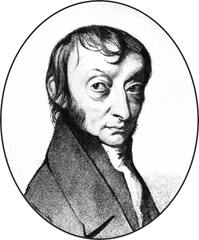An Engaging Dive into Atomic Theory's Early Foundations
Written on
Chapter 1: Reimagining Chemistry
For many, the term “chemistry” evokes memories of an uncomfortable classroom experience, likely filled with complex equations and dry lectures. However, this series aims to shift that perspective, making the subject accessible and enjoyable for everyone.
When discussing John Dalton and the dawn of atomic theory, two critical points stand out:
- Dalton lacked direct physical evidence for the existence of atoms.
Absolutely none. This absence made some researchers skeptical, relegating his theory to the sidelines. However, he did possess a wealth of indirect evidence, and his ideas aligned well with existing scientific frameworks.
- Dalton's atomic weight system was both relative and somewhat arbitrary.
Dalton understood that these aspects of his theory could be contentious. He used hydrogen, the lightest gas, as a reference point, assigning it an atomic weight of one while basing all other atomic weights off of this standard. Although he tirelessly promoted his theory, he needed the backing of his peers—other chemists had to integrate his ideas into their own work for them to gain traction. This article will introduce two individuals who essentially provided support for atomic theory.
The first of these key figures was Joseph Louis Gay-Lussac (1778–1850), often referred to as “JGL.” Coming from a well-to-do family, JGL had the privilege of studying under prominent scientists like Berthollet and Fourcroy, both of whom were disciples of Lavoisier. After a brief hiatus, Berthollet returned to Arcueil, a town south of Paris where he established a French equivalent of the Royal Society. This locale became a hub for many renowned chemists and even spawned its own peer-reviewed scientific journal, which later published JGL's endorsement of atomic theory—though neither he nor Dalton recognized its significance at the time.
The Law of Combining Volumes
JGL, like many of his contemporaries, was fascinated by the reactions of hydrogen and oxygen. Who wouldn't be intrigued by explosive experiments? His curiosity led him to investigate the precise ratios of these gases that would fully convert into water without any leftover materials. He determined that two volumes of hydrogen reacted with one volume of oxygen to yield two volumes of water:
2 volumes of H + 1 volume of O → 2 volumes of water
Through similar experiments, JGL discovered that gases reacted in whole number ratios by volume. It’s crucial to note that his goal was to achieve complete consumption of reactants, a concept we now describe as “stoichiometrically balanced.” If he had reacted the gases in ratios other than whole numbers, some reactants would remain unreacted.
In contemporary chemistry, researchers typically publish their findings alongside discussions of their implications. Unfortunately, JGL did not take this step, which is unfortunate because his observations were pivotal in hinting at the atomic nature of water and an essential hypothesis that would follow.
Avogadro’s Hypothesis
The hypothesis, which states that “equal volumes of gases at the same conditions contain equal numbers of particles,” was nearly articulated by JGL, but it was Amedeo Avogadro (1776–1856) who finally published it. Avogadro's number is named in his honor, although he did not discover it himself.
Dalton's theories faced challenges due to this hypothesis. For instance, Dalton claimed that water was composed of one atom of hydrogen and one atom of oxygen, a simplification that was later challenged by Jons Jakob Berzelius (1779–1848), who correctly proposed that water consists of two hydrogen atoms and one oxygen atom. Both interpretations posed issues for Avogadro's hypothesis.
If one accepted Dalton's view, the hypothesis implied that oxygen would have to split in half, contradicting atomic theory. On the other hand, if one accepted Berzelius's view, then two volumes of hydrogen and one volume of oxygen would yield only one volume of water—again, conflicting with experimental evidence. Thus, Avogadro's hypothesis appeared to be on shaky ground until he ingeniously redefined the situation.
In 1811, Avogadro proposed that these elemental gases existed as diatomic particles in their natural state. Although he didn’t use the term “diatomic,” he provided a framework for explaining the experimental observations. By considering individual molecules rather than volumes, he clarified that two molecules of diatomic hydrogen yield four hydrogen atoms, while one molecule of diatomic oxygen yields two oxygen atoms for interaction with hydrogen.
This simplification leads us to understand that four hydrogen atoms (from two diatomic hydrogen molecules) react with two oxygen atoms (from one diatomic oxygen molecule), resulting in two water molecules according to Berzelius’s composition. Everything aligns!
Despite this breakthrough, Avogadro's hypothesis largely went unnoticed for fifty years. This period (1811–1860) was marked by significant advances in empirical knowledge, including discoveries related to chemical electricity and new elements, but all were based on various atomic weight theories. The confusion over atomic weight standards ultimately prompted a conference in 1860 where Avogadro's hypothesis was reevaluated.
Though Avogadro never realized the full impact of his work, the significance of his findings cannot be overstated. The law of combining volumes influenced numerous chemists, and while Avogadro's hypothesis was initially seen as a challenge to atomic theory, it ultimately reinforced it fifty years later. What transpired during those fifty years, you ask? Stay tuned for our next installment—hint: it was a period of remarkable progress.
The first video, "Atomic History: Dalton, Crookes, Thomson," delves into the evolution of atomic theory, highlighting key figures and their contributions to our understanding of atoms.
The second video, "WKRP: Venus Explains the Atom," offers an engaging and simplified explanation of atomic structure and the principles behind atomic interactions.
Chapter 2: Unraveling the Gaps

In conclusion, while the journey of atomic theory was fraught with challenges, the contributions of these early chemists laid the groundwork for modern chemistry, setting the stage for future discoveries.
